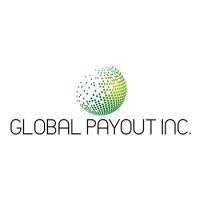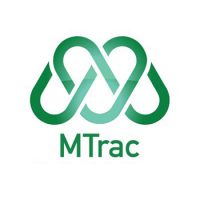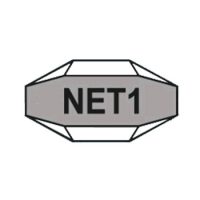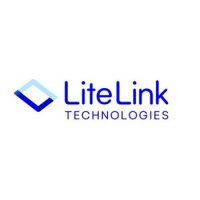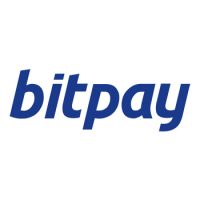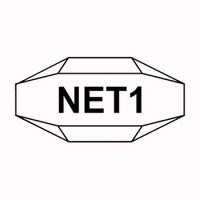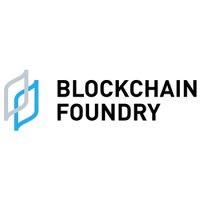Blockchain
Blocks & Headlines: Today in Blockchain – April 08, 2025

In the ever-evolving realm of blockchain and cryptocurrency, innovation never ceases to astound. Today’s briefing offers a comprehensive analysis of groundbreaking developments that are reshaping not only blockchain technology but also the broader crypto space. In this in-depth op-ed-style daily briefing, we explore an eclectic mix of news stories—from the launch of weather apps on blockchain platforms and the growing influence of blockchain in institutional finance, to record-breaking Bitcoin mining performances, cutting-edge blockchain accounting solutions, and experimental tokenization initiatives in a regulatory sandbox. This analysis is designed to offer both a detailed summary of the latest headlines and an engaging exploration of the broader implications of these trends for the industries of blockchain, cryptocurrency, Web3, DeFi, and NFTs.
Introduction: Charting New Territories in Blockchain Innovation
As traditional financial systems grapple with new challenges and emerging disruptive technologies, blockchain continues to prove its mettle as a transformative force. This morning’s headlines bring to light diverse stories that, although varied in their technical details and industry applications, share a common theme: a decisive pivot toward decentralization, transparency, and innovation.
Blockchain technology is no longer the sole preserve of cryptocurrencies—it now pervades many aspects of our lives, from financial services and healthcare to real estate and the burgeoning world of decentralized finance (DeFi). With each innovative application, the narrative of blockchain expands its horizons, touching on everything from real-world use cases like weather prediction and asset tracking to sophisticated financial instruments and regulatory experiments. Today, we focus on five pivotal stories that highlight these trends:
-
The expanding use of blockchain in the development of weather apps.
-
South Korea’s National Pension Service exploring blockchain for seamless fund transactions.
-
Riot Blockchain achieving an all-time high in Bitcoin mining performance post-halving.
-
BNY Mellon’s introduction of a blockchain-powered accounting tool.
-
A pioneering collaboration between Sei and CTRL-ALT to explore tokenization under the Bank of England’s sandbox.
Each of these stories not only offers a snapshot of current achievements but also lays the groundwork for future innovations that will likely redefine industry standards. Over the following sections, we delve into each narrative in detail—unpacking the technical advancements, strategic implications, and potential future impacts within the blockchain and crypto space. By examining these stories through an analytical, opinion-driven lens, we aim to provide clarity and insight that go beyond the headlines.
Blockchain Weather Apps: A New Horizon for Decentralized Data
Source: CoinGeek
Blockchain technology has long been associated with finance and cryptocurrencies, but its application is expanding into unexpected yet promising fields. The latest news from CoinGeek highlights the introduction of weather apps built on blockchain platforms, a development that is both innovative and reflective of broader trends in decentralization. In this piece, BSV (Bitcoin SV) has once again pushed the envelope by releasing another weather app that leverages the blockchain for data integrity and accessibility.
The Promise of Blockchain in Weather Forecasting
At its core, the integration of blockchain in weather apps is driven by a desire to enhance data reliability and transparency. Traditional centralized weather data services have often been critiqued for issues related to data manipulation, central points of failure, and limited public trust. By contrast, blockchain’s immutable ledger ensures that once weather data is recorded, it cannot be altered without detection—a feature that is particularly attractive in an era when data integrity is paramount.
Blockchain weather apps are designed to decentralize the process of data collection, aggregation, and distribution. This innovation enables multiple sensors and independent data sources to feed directly into a blockchain network where the data is timestamped, validated, and made publicly accessible. The result is a model of weather forecasting that is not only more resilient and transparent, but also inherently resistant to tampering.
Strategic Implications for the Broader Ecosystem
The release of another weather app by BSV signals a crucial strategic shift: industries beyond finance are increasingly recognizing the potential of blockchain technology. While weather apps may seem a niche application, they represent a broader movement toward decentralizing data services. For stakeholders, this is not just about more accurate weather forecasts—it’s about establishing a new paradigm for trust and reliability in public data.
One of the transformative aspects of blockchain-enabled weather applications is their potential to improve emergency response systems. With real-time, tamper-proof data at their disposal, government agencies and disaster management teams can make quicker, more informed decisions during crises. Moreover, industries such as agriculture, logistics, and energy can leverage this data to optimize operations and mitigate risks associated with weather variability.
Opinion: Beyond the Forecast
From an op-ed perspective, the evolution of blockchain weather apps underscores a critical trend in the industry: the relentless pursuit of decentralization. As blockchain finds applications in unexpected areas, it challenges us to rethink our established systems of data collection and management. The move toward decentralized weather forecasting not only democratizes access to critical information but also paves the way for innovations in other areas of public interest.
Moreover, this development invites broader discussions about data ownership and governance. Who owns the weather data, and how can it be used by various stakeholders? As blockchain weather apps proliferate, these questions will need to be addressed to ensure that the benefits of decentralization are widely distributed and ethically managed.
South Korea’s National Pension Service Eyes Blockchain for Fund Transactions
Source: CoinDesk
In a significant move that underscores the growing influence of blockchain in institutional finance, South Korea’s National Pension Service (NPS) is evaluating the use of blockchain technology to handle transactions for its USD 890 billion fund. This initiative, as reported by CoinDesk, reflects a broader trend in which traditional financial institutions are leveraging blockchain to enhance transparency, reduce transaction costs, and streamline operations.
Bridging Old World Finance with New World Technology
The NPS’s exploration of blockchain for fund transactions is a bold move that promises to revolutionize how large-scale financial operations are conducted. With billions of dollars at stake, the imperative for secure, efficient, and transparent financial management is paramount. Blockchain technology offers a solution by eliminating intermediaries and providing a secure and verifiable digital ledger that can track every transaction in real time.
The potential benefits of this initiative are substantial. By adopting blockchain, the NPS could reduce the latency typically associated with cross-border transactions and lower the risk of fraud—a critical consideration when managing funds on such a massive scale. Additionally, blockchain’s inherent transparency can bolster regulatory compliance, a key factor in fostering trust among investors and stakeholders alike.
The Broader Financial Implications
This move by South Korea’s NPS is emblematic of a larger trend where institutional investors are stepping up to the blockchain revolution. As regulators around the world continue to refine the legal frameworks for blockchain applications in finance, institutions like the NPS are positioning themselves as early adopters to gain a competitive edge. The benefits of blockchain—enhanced security, efficiency, and transparency—are particularly compelling for entities managing vast sums of money in a rapidly digitalizing economy.
Adoption by such a major institutional player sends a strong message to the market. It not only validates the potential of blockchain technology for high-stakes financial applications but also paves the way for wider acceptance and adoption across the global financial sector. As more institutions begin to integrate blockchain into their operations, the cumulative effect could be a fundamental transformation of the financial industry—a shift from legacy systems to agile, decentralized networks capable of operating at unprecedented speeds and scales.
Opinion: A Quantum Leap for Institutional Finance
The implications of the NPS’s potential blockchain adoption are far-reaching. In an age where digital transformation is no longer optional but essential, the move by South Korea’s National Pension Service is a quantum leap toward a future where financial transactions are more secure, efficient, and transparent. It is a statement that traditional financial institutions are not content to rest on their laurels but are actively seeking innovative solutions to stay ahead of the curve.
This development should serve as a wake-up call for other large funds and institutional players. The blockchain revolution is here, and those who fail to adapt risk being left behind in an increasingly digital world. By embracing blockchain, institutions like the NPS are not only enhancing their own operational capabilities but also setting a precedent that could ultimately redefine global financial practices.
Riot Blockchain’s Stellar Bitcoin Mining Performance Post-Halving
Source: MuggleHead
In the highly competitive world of Bitcoin mining, performance metrics are closely monitored by both investors and industry insiders. Recent reports from MuggleHead indicate that Riot Blockchain has recorded its best Bitcoin mining month since the most recent halving event—a milestone that speaks volumes about the company’s operational efficiency and the broader market’s resilience.
The Significance of the Bitcoin Halving
Bitcoin’s halving event is a well-known catalyst in the cryptocurrency realm. Occurring approximately every four years, halving reduces the reward miners receive for successfully validating transactions on the Bitcoin network. This built-in mechanism is designed to control the supply of Bitcoin, ultimately contributing to its scarcity and, by some, its value proposition as “digital gold.” However, the immediate aftermath of a halving event can be challenging for mining companies, as revenue per block mined is temporarily reduced.
Despite these challenges, Riot Blockchain’s robust performance in the wake of the halving is an encouraging sign for the crypto mining industry. The record-breaking month is a testament to the company’s ability to optimize operations, manage costs, and leverage state-of-the-art mining technology—even when faced with a reduction in block rewards. For investors, such performance is indicative of the underlying strength of the network and the commitment of industry players to maintain competitive efficiency.
Technical Mastery and Operational Resilience
Riot Blockchain’s success can be attributed to several factors. First, the company’s continuous investment in cutting-edge mining hardware has ensured that it operates at peak efficiency. Advanced equipment not only increases the hashing power—a measure of the network’s computational strength—but also improves energy efficiency, which is crucial given the soaring costs associated with powering large-scale mining operations.
Furthermore, Riot’s data-driven approach to mining optimization plays a crucial role. By leveraging sophisticated analytics and blockchain data, the company is able to fine-tune its operations in real time, adjusting its strategies to maximize profitability despite the challenging post-halving environment. This agility in operation is essential for navigating the inherent volatility and technical demands of Bitcoin mining.
Opinion: Resilience in the Midst of Change
From an analytical perspective, Riot Blockchain’s stellar performance post-halving serves as a powerful reminder of the resilience and dynamism that characterize the cryptocurrency mining sector. In an environment where market conditions are influenced by predictable events like halving as well as unpredictable external factors, the ability to maintain and even enhance operational performance is a hallmark of industry leadership.
This success story also invites us to consider the broader implications for the cryptocurrency market. The ability of mining companies to weather the halving storm and deliver robust output is a positive signal for the overall health of the Bitcoin network. It suggests that, despite short-term challenges, the underlying infrastructure is robust enough to support growth and innovation over the long term.
BNY Mellon’s Blockchain Accounting Tool: Transforming Financial Transparency
Source: Yahoo Finance
In a move that underscores the growing intersection between traditional finance and blockchain innovation, BNY Mellon has unveiled a cutting-edge blockchain accounting tool designed to revolutionize financial transparency. As reported by Yahoo Finance, this new tool represents a significant stride toward integrating blockchain technology into the core of financial operations—a transformation that promises enhanced accuracy, streamlined processes, and real-time data verification.
A Paradigm Shift in Financial Accounting
For decades, traditional accounting practices have been burdened by inefficiencies, the risk of human error, and time-consuming reconciliation processes. BNY Mellon’s blockchain accounting tool is set to challenge this status quo by harnessing the immutable and transparent nature of blockchain technology. The tool enables seamless tracking of financial transactions on a decentralized ledger that is accessible to authorized stakeholders in real time.
This innovation is not merely a technological upgrade; it is a fundamental shift in the way financial data is managed and verified. The tool promises to improve auditability, reduce the risk of fraud, and significantly cut down on the time required for financial reconciliations. By ensuring that every transaction is recorded in a secure, tamper-proof manner, the system elevates the standards of financial accountability and transparency.
Enhancing Operational Efficiency and Trust
From an operational standpoint, BNY Mellon’s blockchain accounting solution offers a competitive edge. For large financial institutions, the need for rapid, accurate accounting is paramount—not only for internal management but also for regulatory compliance and external audits. The reduction in manual processes can lead to cost savings and lower risk profiles, ensuring that the financial ecosystem remains robust and resilient.
The broader implications of this development are significant. As more financial institutions adopt blockchain-powered accounting solutions, the cumulative effect will be a more efficient, transparent, and trustworthy financial market. Enhanced transparency will also bolster investor confidence, as stakeholders can readily verify financial transactions and trace the flow of assets without the need for intermediaries.
Opinion: Pioneering a New Era in Finance
BNY Mellon’s foray into blockchain-based financial tools marks a turning point for the traditional finance industry. By embracing blockchain, the institution is not only modernizing its own practices but also setting a benchmark for industry-wide transformation. This move signals a new era where financial transactions are executed with unparalleled speed, accuracy, and security.
For proponents of digital transformation in finance, this development is a harbinger of more widespread change. The convergence of traditional financial operations with blockchain technology is poised to create an environment where transparency and efficiency are the norm rather than the exception. This achievement is particularly noteworthy in a time when global markets are grappling with the demands of rapid digitalization and increasingly stringent regulatory requirements.
Tokenization in the Bank of England Sandbox: A Collaborative Experiment
Source: PR Newswire
In one of the most innovative collaborations to date, Sei and CTRL-ALT have announced plans to explore the tokenization of financial assets within the Bank of England’s regulatory sandbox. Reported by PR Newswire, this exploratory project aims to investigate the potential of tokenization—a process that converts physical and digital assets into blockchain-based tokens—to revolutionize asset management and financial services.
The Promise of Tokenization
Tokenization represents a transformative approach to asset management. By converting assets into digital tokens, the process enables increased liquidity, fractional ownership, and more efficient market transactions. For financial institutions and investors alike, tokenization offers a host of benefits: from streamlining settlement times to reducing transaction costs and providing unprecedented access to traditionally illiquid assets.
The collaboration between Sei and CTRL-ALT takes tokenization into uncharted territory by conducting their experiments within the controlled environment of the Bank of England’s sandbox. This regulatory framework is designed to foster innovation by allowing companies to test new ideas without the full weight of regulatory compliance—thus balancing innovation with consumer protection and systemic risk management.
Collaborative Innovation Under Regulatory Oversight
The tokenization initiative within the Bank of England’s sandbox is not just a technical experiment; it is a convergence of innovative thinking, regulatory foresight, and market potential. By collaborating within a structured regulatory environment, Sei and CTRL-ALT are afforded the flexibility to develop and refine tokenization strategies while simultaneously engaging with regulatory authorities. This approach mitigates risk and encourages a dialogue between innovators and policymakers—a dialogue that is essential for the sustainable integration of disruptive technologies in the financial system.
Opinion: Pioneering the Future of Asset Management
This initiative is arguably one of the most forward-thinking endeavors in the blockchain space today. The fusion of tokenization with a regulated experimental framework suggests that the future of asset management could be both highly innovative and rigorously secure. It is a testament to the fact that blockchain technology is not merely a tool for digital currencies, but a comprehensive platform capable of redefining the very structure of financial markets.
From an op-ed perspective, the exploration of tokenization under the auspices of the Bank of England is a bold reminder that innovation and regulation need not be at odds. Rather, when properly managed, they can work in tandem to create financial instruments and markets that are more inclusive, efficient, and resilient. This collaborative model might well serve as a blueprint for future experiments in the blockchain and cryptocurrency sectors.
Synthesis: Major Takeaways and the Road Ahead
As we step back to consider the day’s diverse yet interconnected headlines, several overarching themes emerge that are likely to shape the future of blockchain and cryptocurrency:
1. Diversification of Blockchain Applications
From decentralized weather apps to institutional blockchain adoption in finance, we are witnessing the true potential of blockchain as a multi-dimensional technology. Its ability to provide transparency, security, and efficiency is compelling industries far beyond its original financial domain. This diversification is crucial as it spreads the benefits of blockchain across various sectors and widens the scope of its impact.
2. Institutional Endorsement and Mainstream Adoption
The interest shown by major institutions, such as South Korea’s National Pension Service and BNY Mellon, demonstrates that blockchain is rapidly moving from experimental technology to a fundamental component of institutional operations. This recognition not only legitimizes blockchain’s utility but also accelerates its integration into traditional finance and beyond.
3. Operational Resilience and Technological Mastery
Riot Blockchain’s record-breaking performance, even in the challenging post-halving environment, exemplifies the technical prowess and operational resilience of industry leaders. Their ability to adapt, optimize, and thrive amid market volatility is an encouraging sign for the broader cryptocurrency ecosystem.
4. Regulatory Experimentation and Innovation
The tokenization project within the Bank of England sandbox underscores the importance of regulatory innovation in fostering technological breakthroughs. By exploring emerging concepts in a controlled environment, collaborations like that of Sei and CTRL-ALT are paving the way for secure, scalable, and market-ready innovations in asset management.
5. Implications for the Future of Blockchain and Finance
Collectively, these developments suggest that the future of blockchain lies in its broad applicability and its capacity to bridge the old with the new. As traditional industries continue to adopt blockchain solutions, we can expect significant improvements in efficiency, security, and overall market resilience. Furthermore, as blockchain technology continues to integrate with complementary technologies such as AI and IoT, the stage is set for even more innovative applications that we have yet to imagine.
Final Reflections: Embracing a Transformative Future
Today’s headlines remind us that the blockchain revolution is not a transient trend—it is a relentless force driving substantial changes across multiple industries. The diversity of applications, ranging from decentralized weather forecasting and institutional finance to advanced Bitcoin mining and experimental tokenization, highlights the growing versatility and indispensability of blockchain technology.
As blockchain continues to mature, the path forward will be characterized by greater convergence between traditional finance, advanced technological solutions, and proactive regulatory frameworks. Stakeholders—from technology startups and institutional investors to regulators and policymakers—must work collaboratively to harness this potential, ensuring that the transformative benefits of blockchain are widely distributed while mitigating associated risks.
In our rapidly digitalizing world, the integration of blockchain into everyday financial and operational systems is fast becoming a cornerstone of innovation. Whether you are an investor seeking to understand the implications of institutional blockchain adoption, a developer working on next-generation decentralized applications, or a policymaker shaping the regulatory landscape, today’s developments provide critical insights into where the industry is headed.
The key takeaway from this briefing is clear: the blockchain revolution is multi-faceted and accelerating. Every innovative application, every strategic partnership, and every regulatory experiment is a building block in a larger structure that promises to redefine how we think about data, transactions, and trust. The future of blockchain is not confined to any one use case; rather, it is an expansive ecosystem that will continue to evolve and disrupt.
As we look to tomorrow, the challenges are as significant as the opportunities. Cybersecurity concerns, scalability issues, and regulatory uncertainties are hurdles that must be overcome. However, the dynamic nature of the technology, coupled with the relentless drive of innovators and early adopters, ensures that the trajectory is upward. It is incumbent upon us to stay informed, be agile in our adoption of new technologies, and engage with the broader community to foster an environment where blockchain can thrive responsibly.
In-Depth Analysis: How Today’s Developments Reshape the Industry
Let’s examine a few key insights that are critical to understanding the broader implications of today’s blockchain headlines:
Innovation Beyond Cryptocurrency
While the cryptocurrency market remains at the forefront of blockchain discussions, it is important to recognize that the technology’s potential extends far beyond digital tokens and financial speculation. The success of blockchain weather apps, for instance, illustrates how decentralized technologies can disrupt everyday services by ensuring data integrity and democratizing access to information. This development is a strong reminder that blockchain can act as a catalyst for change in areas that have been historically overlooked by traditional tech innovations.
Institutional Confidence and the Path to Adoption
The initiatives undertaken by high-profile institutions like South Korea’s National Pension Service and BNY Mellon signal a shift in sentiment among traditional financial stakeholders. By exploring blockchain for fund transactions and integrating blockchain-based accounting tools, these institutions are not only modernizing their operations but also endorsing the notion that blockchain is critical for future-proofing finance. This trend is likely to spur additional innovation and investment from other sectors, driving blockchain adoption across a wider spectrum of industries.
Efficiency and Resilience in a Volatile Market
The performance of mining companies such as Riot Blockchain serves as a powerful indicator of the resilience and efficiency inherent in well-managed blockchain operations. Even in the wake of industry-wide challenges like the Bitcoin halving, Riot’s record month underscores the capability of blockchain technology to adapt and thrive. This resilience is essential for sustaining long-term growth and maintaining investor confidence in the face of volatility.
Experimentation Within Regulatory Sandboxes
The exploratory project involving Sei, CTRL-ALT, and the Bank of England is emblematic of a proactive approach to balancing innovation with regulation. By engaging in experiments within a regulatory sandbox, innovators can test disruptive ideas without exposing the financial system to undue risk. Such collaborative efforts are crucial for developing sustainable blockchain solutions that meet the rigorous standards of traditional finance while retaining the groundbreaking benefits of decentralized technology.
Broader Implications for Global Finance and Beyond
Ultimately, today’s developments showcase a critical evolution in how both private and public sectors approach technological innovation. The convergence of blockchain with established financial practices represents a convergence of decades-old operational methods with modern digital advancements. This transformation extends the promise of blockchain far beyond narrow financial applications, hinting at a future where its integration spans health care, logistics, education, and smart city initiatives.
A Look Ahead: The Future Landscape of Blockchain and Cryptocurrency
Looking forward, several trends are likely to shape the trajectory of blockchain and cryptocurrency:
-
Enhanced Interoperability:
As blockchain applications become more widespread, the need for systems that communicate effectively across various networks will grow. Innovations aimed at enhancing interoperability will enable seamless integration of blockchain solutions into existing infrastructures, ensuring that data flows securely and efficiently across platforms. -
Sustainable Growth and Energy Efficiency:
The environmental impact of blockchain, particularly in areas such as cryptocurrency mining, remains a topic of significant concern. Future developments are expected to focus on improving energy efficiency and exploring sustainable alternatives that minimize the ecological footprint of blockchain technologies. -
Widespread Regulatory Harmonization:
As blockchain gains mainstream acceptance, regulatory bodies around the world will likely collaborate to establish uniform standards. Such harmonization will create a more stable and predictable environment for blockchain innovation, reducing uncertainty and fostering global adoption. -
Advanced Security Measures:
With the increasing integration of blockchain in critical applications, cybersecurity will remain a top priority. Ongoing advancements in encryption, threat detection, and smart contract safety protocols will ensure that blockchain systems remain robust against malicious attacks. -
Expansion into Non-Financial Sectors:
Finally, as more industries recognize the transformative potential of blockchain, we can expect substantial growth in its application outside of finance. From decentralized healthcare records to transparent supply chain management and secure voting systems, blockchain is poised to reinvent the way we manage and trust data in virtually every domain.
Conclusion: Navigating Today’s Blockchain Landscape with Insight and Agility
In closing, today’s blockchain roundup has illuminated a series of pivotal developments that are collectively charting the future of digital innovation. From the pioneering implementation of blockchain in weather forecasting and institutional finance to the record-breaking achievements in Bitcoin mining and experimental tokenization efforts, each story contributes a vital piece to the larger puzzle of blockchain’s transformative power.
The major takeaways from today’s briefing are clear:
-
Diversity in Application: Blockchain’s expanding role across various sectors reflects its versatility and potential to drive significant advancements in both technology and daily life.
-
Institutional Adoption: The proactive measures undertaken by major financial institutions mark a turning point in the recognition of blockchain as a vital tool for modernizing operations and ensuring transparency.
-
Operational Excellence: Success stories like Riot Blockchain’s post-halving performance illustrate the resilience and technical innovation that are essential for thriving in a volatile market.
-
Regulatory Experimentation: Initiatives within controlled environments such as the Bank of England sandbox demonstrate that innovation and regulation can work in tandem to produce secure, scalable solutions.
As stakeholders in the blockchain and cryptocurrency space, it is imperative that we remain vigilant and forward-thinking. Embracing these innovations requires not only a thorough understanding of the technological advances but also a commitment to foster an environment of collaboration and continuous improvement. By doing so, we can ensure that blockchain remains a driving force for transparency, efficiency, and security in the digital era.
The dawn of new applications and the evolution of existing systems are undeniable signals that we are on the cusp of a major technological revolution. It is up to us—investors, innovators, regulators, and enthusiasts alike—to harness this potential responsibly and creatively. The future of blockchain is bright and full of promise, and it is our collective action today that will pave the way for the successes of tomorrow.
The post Blocks & Headlines: Today in Blockchain – April 08, 2025 appeared first on News, Events, Advertising Options.
Blockchain
EAT & BEYOND ANNOUNCES PROPOSED NAME CHANGE AND UPDATED INVESTMENT POLICY
Blockchain
Blocks & Headlines: Today in Blockchain – May 30, 2025 (Fraser Edwards, Kyiv NFT, Spirit Blockchain Capital, Indian eHealth, Hedera)

Blockchain technology and cryptocurrencies continue to redefine industries—from competitive gaming and cultural heritage preservation to corporate finance, healthcare, and alternative tokens. Today’s briefing highlights five pivotal developments shaping the ecosystem: Fraser Edwards’s vision for trust in eSports; Ukraine’s wartime cultural preservation via NFTs; Spirit Blockchain Capital’s Q1 2025 operational report; India’s push for blockchain-enabled electronic health records (EHRs); and the rise of viral altcoins such as UniLabs, Sui, and Hedera Hashgraph. Together, these stories illustrate the themes of trust and identity, preservation and provenance, institutional maturation, public-sector innovation, and token diversification. In this op-ed–style round-up, we distill the essence of each story, cite sources, and offer analysis on how they advance Web3, DeFi, and NFT frontiers.
1. Rebuilding Trust in eSports: Can Blockchain Fix Competitive Integrity?
Source: CCN
Summary:
In a recent CCN interview, veteran trader and eSports investor Fraser Edwards argues that blockchain’s immutable ledgers can restore credibility in the rapidly commercializing world of competitive gaming. According to Edwards, match-fixing scandals and opaque prize-pool distributions have eroded fan confidence. By tokenizing tournament entries and payouts on public blockchains—complete with smart-contract–enforced escrow—organizers can guarantee that prize monies are distributed exactly as advertised, and that no post-match manipulation occurs. Tournament operators in Asia and North America are already piloting Ethereum-based payout dApps, aiming to increase transparency for players and sponsors alike.
Key details & analysis:
-
Smart-contract escrow: Funds are held in a time-locked contract that releases prize money only upon verifiable match results. This prevents disputes over referee decisions or delayed payments.
-
On-chain reputation: Player and team reputations can be tokenized via non-fungible reputation badges that accrue based on fair play and community votes—discouraging cheating.
-
Scalability concerns: High-traffic tournaments may require Layer 2 rollups or alternative chains (e.g., Polygon, Immutable X) to reduce gas costs and latency.
Opinion: Blockchain’s dual promise of provable fairness and programmable finance makes it uniquely suited to eSports. Yet adoption hinges on UX: seamless wallet integrations, minimal transaction fees, and clear regulatory guidance on esports tokens.
2. When Art Meets Blockchain: Ukraine’s Wartime Cultural Preservation
Source: The Kyiv Independent
Summary:
As monuments crumble under artillery fire, Ukrainian curators and technologists are partnering to mint NFTs representing lost or endangered artifacts. The Kyiv Independent reports that the National Art Museum of Ukraine has launched “Project Phoenix,” tokenizing high-resolution 3D scans of sculptures, manuscripts, and paintings. Proceeds from initial sales fund restoration and digital archiving efforts. Each NFT embeds provenance metadata—including GPS coordinates, curator notes, and condition reports—ensuring that future generations can verify authenticity and context, even if the physical artifact is destroyed.
Key details & analysis:
-
Metadata richness: Beyond simple ownership, NFTs store structured metadata—using ERC-721 metadata extensions—that capture curatorial insights and conservation logs.
-
Decentralized archives: IPFS and Arweave are employed to host ultra-high-resolution imagery, with on-chain hashes guaranteeing data integrity.
-
Community engagement: Fractional-NFT drops allow diaspora communities to collectively own tokens, strengthening cultural ties and crowdfunding preservation.
Opinion: Blockchain’s ability to immutable record heritage provides a lifeline for war-torn nations. However, ensuring that local institutions retain governance over metadata edits and future migrations is critical to avoiding “cultural colonialism” by global NFT marketplaces.
3. Spirit Blockchain Capital’s Q1 2025 Highlights: Growth, Investments, and Outlook
Source: GlobeNewswire
Summary:
Spirit Blockchain Capital’s Q1 2025 report benchmarks the firm’s operational milestones and financial performance. Assets under management (AUM) climbed 45% to $1.02 billion, driven by strategic allocations to top-tier Layer 1 and Layer 2 protocols, DeFi liquidity pools, and a newly launched token-index fund. Operating income rose 37%, fueled by management fees and performance incentives. The firm also closed its second blockchain-focused venture fund at $150 million, earmarked for early-stage Web3 projects in gaming, infrastructure, and decentralized identity.
Key details & analysis:
-
Diversification strategy: 60% of AUM in blue-chip cryptocurrencies (Bitcoin, Ethereum); 25% in DeFi (Aave, Uniswap, Lido); 15% in tokenized commodities and NFTs.
-
Fund performance: The flagship fund delivered a 9.8% return in Q1, outperforming the 6.2% benchmark set by the Bloomberg Galaxy Crypto Index.
-
Venture investments: Early stakes in zero-knowledge proof startups and decentralized storage platforms signal confidence in scalability and privacy innovations.
Opinion: Spirit’s robust growth and disciplined diversification mirror institutional maturation in the blockchain asset management space. As regulatory clarity improves, expect further inflows from endowments, pensions, and family offices.
4. Blockchain EHRs in India: The Next Digital Health Revolution
Source: ORF
Summary:
The Observer Research Foundation (ORF) details India’s pioneering pilot of blockchain-backed electronic health records (EHRs) in the state of Andhra Pradesh. By leveraging a permissioned Hyperledger Fabric network, the initiative ensures that patient records—from vaccination histories to diagnostic imaging—are securely shared across hospitals, clinics, and pharmacies. Patients control access via digital identities anchored to India’s Aadhaar system, granting temporal permissions for data viewing and preventing unauthorized sharing.
Key details & analysis:
-
Interoperability: HL7 FHIR standards are mapped to on-chain transactions, enabling seamless data exchange with existing hospital information systems (HIS).
-
Privacy safeguards: Off-chain storage of PHI (Protected Health Information) is encrypted with patient-held keys; only hashed pointers reside on-chain to ensure immutability without exposing sensitive data.
-
Regulatory alignment: The pilot aligns with India’s draft Digital Health Act, which emphasizes data sovereignty and patient consent frameworks.
Opinion: Blockchain EHRs can democratize healthcare access in a populous nation—but success depends on user-friendly portals, robust identity verification, and contingency plans for network outages in rural areas.
5. The Hottest Viral Altcoins of 2025: UniLabs, Sui, and Hedera Lead the Pack
Source: TronWeekly
Summary:
According to TronWeekly, the altcoin landscape in 2025 is dominated by three viral tokens: UniLabs (UNI-L), Sui (SUI), and Hedera Hashgraph (HBAR). UniLabs, a governance token for a decentralized laboratory network, saw a 1,200% year-to-date surge on news of its AI-driven drug-discovery partnership. Sui’s Move-based smart-contract platform gained traction for sub-second finality and low gas fees, with total value locked (TVL) surpassing $2 billion. Hedera’s HBAR continues its enterprise pivot, securing multi-year agreements with global brands for identity verification and supply-chain tracking.
Key details & analysis:
-
UniLabs use case: Token holders vote on research grants and share in royalty revenues from patented compounds developed on-chain.
-
Sui performance: With a novel object model and horizontal sharding, Sui supports over 3,000 TPS (transactions per second) without compromising on decentralization.
-
Hedera enterprise: The Governing Council—comprising Boeing, Google, and LG—bolsters confidence in HBAR’s governance model and paves the way for compliant enterprise deployments.
Opinion: These tokens exemplify the diversification of blockchain applications. Investors should assess not only market hype but also protocol fundamentals—developer activity, economic incentives, and real-world adoption.
Cross-Story Trends & Key Takeaways
-
Trust & Transparency at the Core
From esports prize-pool ledgers to wartime NFT archives and permissioned health records, blockchain’s immutability fosters verifiable trust—a prerequisite for mainstream adoption across sectors. -
Institutional & Public-Sector Innovation
Spirit Blockchain Capital’s fund growth and India’s EHR pilot signal that both private and government entities view blockchain as a strategic infrastructure, not just speculative assets. -
Vertical Specialization Fuels Token Growth
Viral altcoins like UniLabs, Sui, and Hedera thrive by addressing niche use-cases—governance in biotech, scalable DeFi rails, and enterprise identity—underscoring the importance of purpose-built protocols. -
Metadata & Provenance Drive NFTs Beyond Art
Ukraine’s cultural NFTs demonstrate how rich on-chain metadata can preserve heritage, while esports applications show that reputation tokens can enforce fair-play credentials. -
Ecosystem Maturation Requires UX & Governance
Across all stories, user experience—wallet onboarding, identity verification, metadata curation—and robust governance frameworks (tokenomics, regulatory alignment) emerge as decisive factors in blockchain’s next wave.
Conclusion
Today’s blockchain headlines reveal a maturing ecosystem where trust, transparency, and targeted innovation unlock new frontiers—from safeguarding digital heritage amid conflict to revolutionizing healthcare and sports. As institutional players allocate billions, and public-sector pilots chart regulatory pathways, the fate of tomorrow’s Web3 landscape hinges on seamless UX, rigorous governance, and demonstrable real-world utility. Stay tuned for tomorrow’s Blocks & Headlines, where we’ll continue tracking the trends, tokens, and technologies that define the blockchain revolution.
The post Blocks & Headlines: Today in Blockchain – May 30, 2025 (Fraser Edwards, Kyiv NFT, Spirit Blockchain Capital, Indian eHealth, Hedera) appeared first on News, Events, Advertising Options.
Blockchain
Kyrgyz Republic to launch USDKG, a gold-backed stablecoin pegged to the U.S. Dollar, in Q3 2025

USDKG
-

 Blockchain Press Releases3 days ago
Blockchain Press Releases3 days agoRain Expands Support to Solana, Tron, and Stellar, Enabling More Partners to Launch Stablecoin-powered Card Programs
-

 Blockchain Press Releases5 days ago
Blockchain Press Releases5 days agoFlipster Reveals Middle East Expansion Plans and Appoints Regional Leadership to Bolster Crypto Trading
-

 Blockchain Press Releases5 days ago
Blockchain Press Releases5 days agoCoinW Teams Up with Superteam Europe to Conclude Solana Hackathon and Accelerate Web3 Innovation in Europe
-

 Blockchain Press Releases2 days ago
Blockchain Press Releases2 days agoBybit Secures MiCAR License in Austria, Opens European Headquarters in Vienna with Strategic Expansion Plan
-

 Blockchain4 days ago
Blockchain4 days agoBlocks & Headlines: Today in Blockchain – May 27, 2025 Featuring Blockchain.com, Bilal Bin Saqib, XRP Ledger, Unstoppable Domains, ReNEW, MEXC Ventures
-

 Blockchain5 days ago
Blockchain5 days agoBlocks & Headlines: Today in Blockchain – May 26, 2025 (Lightchain AI, Cetus Hack, Bilal Bin Saqib, The Blockchain Group)
-

 Blockchain2 days ago
Blockchain2 days agoBlocks & Headlines: Today in Blockchain – May 29, 2025 (Vaulta, Fosun, Signing Day Sports, Credit Unions, Gaming Innovations)
-

 Blockchain Press Releases6 days ago
Blockchain Press Releases6 days agoAB Charity Foundation X AB Blockchain Join Forces to Advance the Global “Tech for Good” Mission






